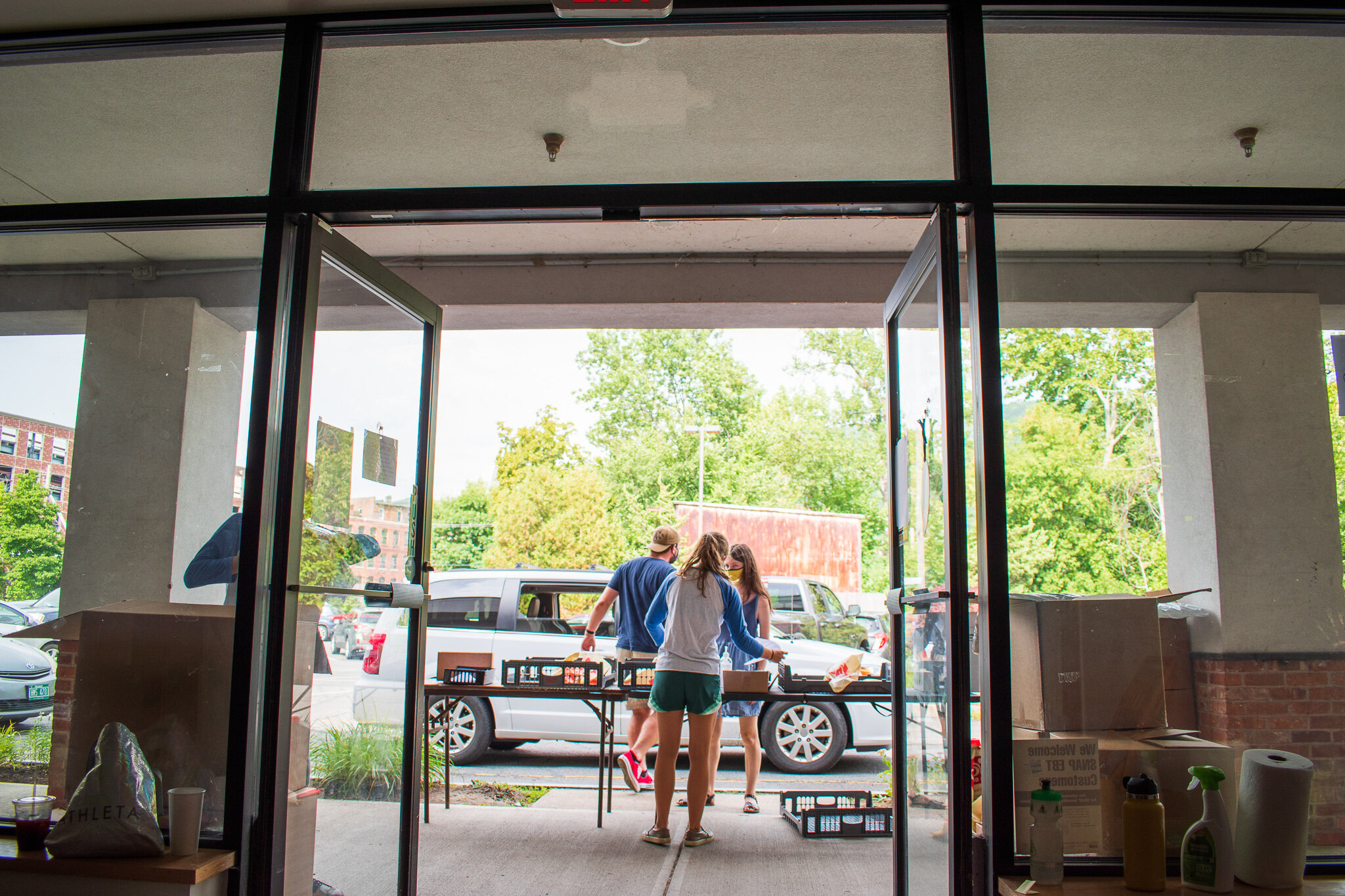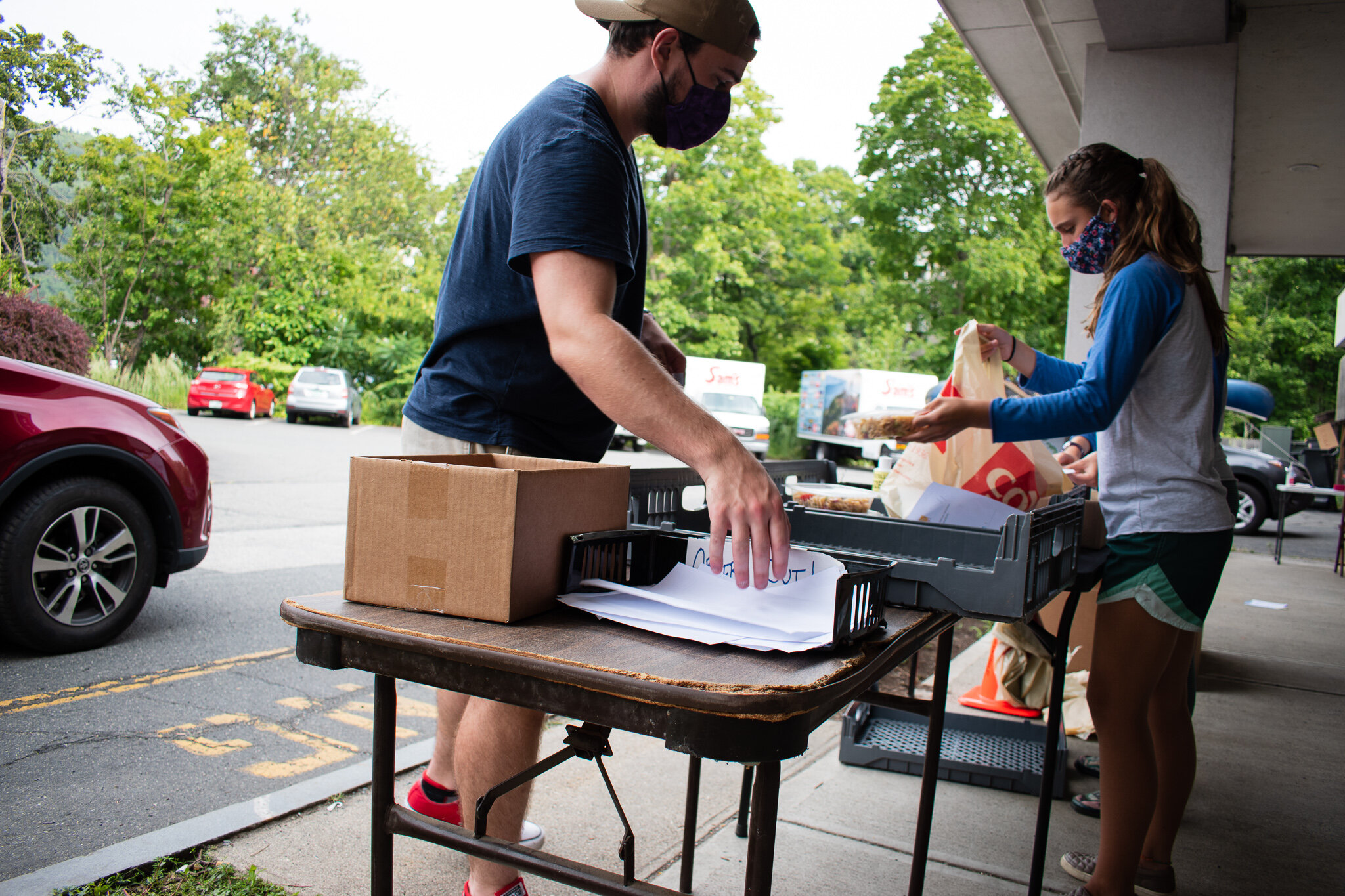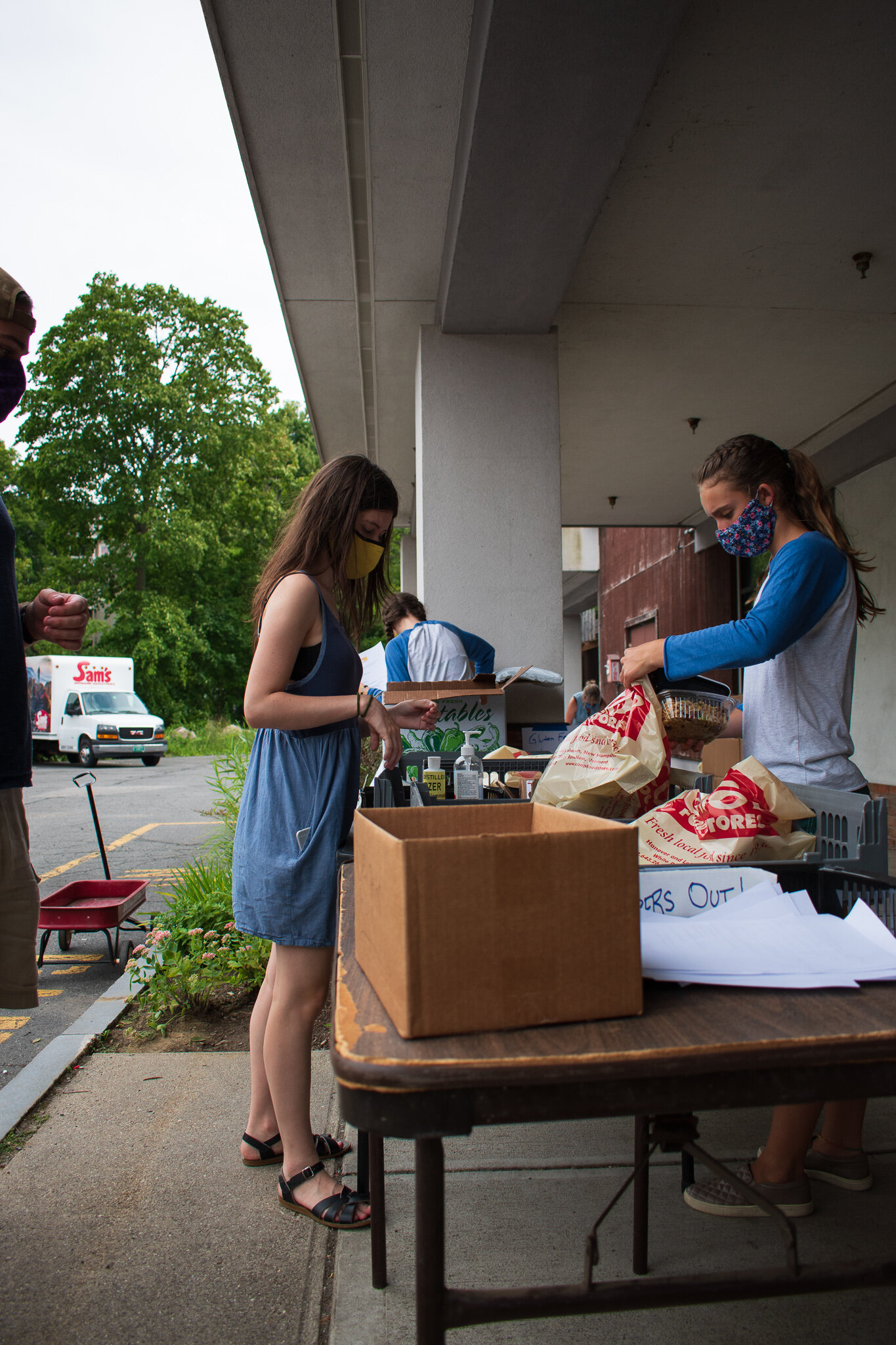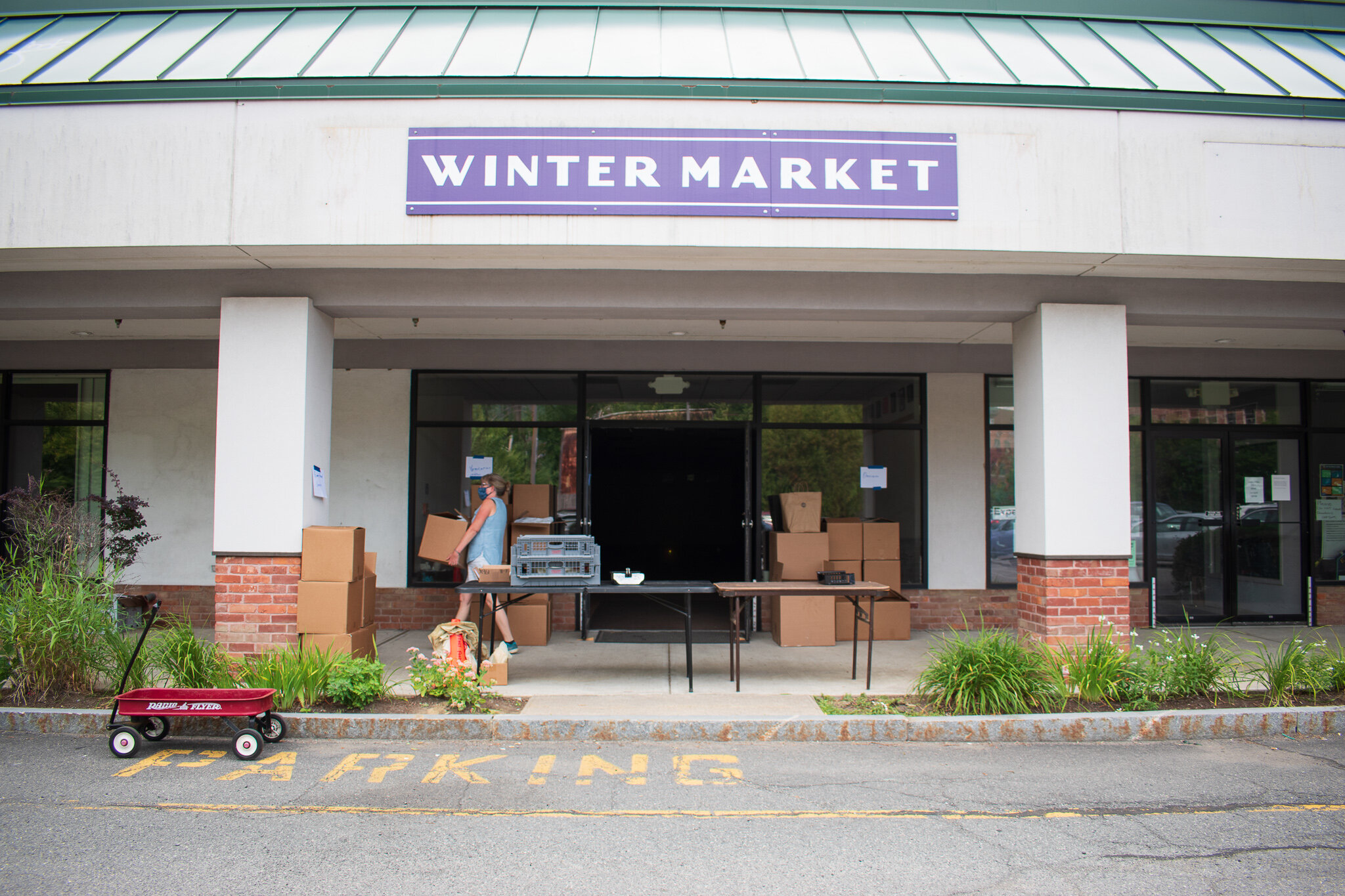Nearing the halfway mark for the program, Everyone Eats! grew from a far-fetched idea to a wildly successful COVID-19 relief program that is now replicated throughout the state. With over $600,000 of funding coming from the Federal Coronavirus Relief Fund to southeastern Vermont’s regional economy, the program is a huge support for restaurants, local producers, and residents.
Developed through conversations with the Vermont Department of Housing and Community Development and the Downtown Brattleboro Alliance (DBA) on how to use FEMA funds to support local restaurants, the Everyone Eats! Brattleboro (EE!B) coalition now represents a diverse, cross-sector team consisting of nonprofits, state agencies, and local businesses. Modeled off of preceding programs, such as The Skinny Pancake’s Shift Meals program and mutual aid groups that popped up nationwide, the radical idea was to pay local restaurants to feed their neighbors in need.
That seemingly simple idea ended up being more complicated than originally thought. Those complications, along with road bumps in securing funding for the program, pushed a June start date back to August. Despite the setback, that gave the new coalition time to meet, plan, and develop the relationships that would prove essential for success. In an article from earlier this year, Food Connects highlighted the importance of starting with existing connections and celebrated the strong partnerships that exist between charitable food organizations in the area thanks to the Windham Region Hunger Council. The EE!B benefited from these connections as well, but also included new organizations and businesses, opening the door to new opportunities.
The program has had three major pillars guiding it throughout its creation—supporting local restaurants, supporting our neighbors, and supporting the community. It’s a win for everyone, whether you’re making the food, receiving a meal, or are a producer selling to the restaurants. Currently, participating restaurants are spending about $2,000 a week total on local food. This is helped by a 10% local purchasing requirement built into the program and restaurants are going far beyond that, with 20% of spending often staying local.
Photo credit: Stephanie Bonin
The EE!B coalition saw this program as an opportunity to build compassion in the community. Food shelves and food relief is often stigmatized which creates barriers for families in need of support to access the programs. With many new people accessing support for the first time, we wanted to ensure that the program was equitable for all participants. That meant that those who were experiencing homelessness and long time users of charitable food were able to access the program alongside the newly unemployed and community members picking up meals for the first time.
We strove for equity through two different approaches. First, we provided an alternative channel for organizations to pick up meals for their clients. By doing this, we made meals accessible to homebound residents, families without cars, or neighbors who had tight schedules and couldn’t make the pick-up times. Next, we created language about the program that made it clear that everyone was welcome—foregoing means-testing, income identification, or other class-based demographics meant that it was easy for anyone to pick up meals.
Our hope is that by opening up the program to the entire community, a stronger collective recognition and compassion for charitable food has been developed. People who never before had waited in line for a free meal or so clearly been the recipient of community support now have new experiences to draw from.
So what does this mean moving forward? EE!B will run until December 10. Participation is strong and new restaurants continue to join the program. Looking to the new year, we hope to shift how charitable food is thought about and accessed in our community. Foodworks started this long before the pandemic, adapting their programs to be more trauma-informed and accessible. The new partnerships formed between Foodworks, the Vermont Foodbank and the Downtown Brattleboro Alliance could lead to even more innovation. Services are more often accessed when they’re in central, welcoming, and high-use locations. EE!B saw an increase in users as it mixed traditional charitable food with a more general community support program. What’s next is for the community to decide, whether that be pay-what-you-can markets, mixed-use community spaces where services are also provided, or something yet to be thought of.
‘Vermont Everyone Eats’ is funded by the federal Coronavirus Relief Fund and made possible through a grant provided by the Vermont Agency of Commerce and Community Development to Southeastern Vermont Community Action (SEVCA).





